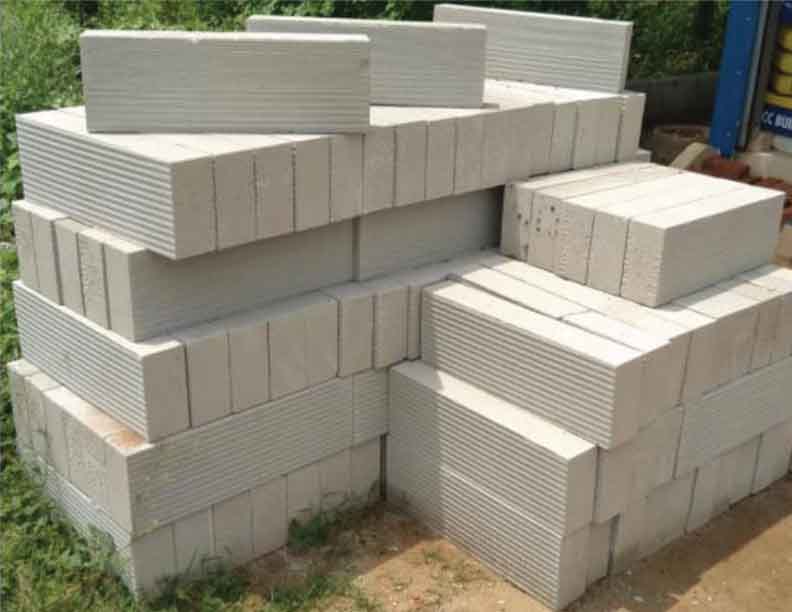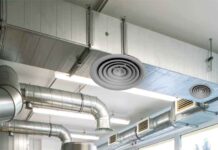
Sustainable Landscaping
Sustainable landscaping in green buildings focuses on designing outdoor spaces that conserve resources, support biodiversity, and enhance environmental quality. It includes using native and drought-tolerant plants, efficient irrigation systems, and permeable surfaces to reduce water consumption and stormwater runoff. Sustainable landscaping also helps lower urban heat island effects, improves air quality, and provides natural shading that reduces building cooling loads. By integrating greenery into the built environment, it creates healthier, more resilient ecosystems while improving occupant comfort and contributing to the overall sustainability goals of green buildings.
Building Design & Management:
In the context of green buildings, design and management play a pivotal role in shaping sustainable and efficient built environments. A green building is not only about innovative construction but also about integrating strategies that reduce environmental impact throughout its lifecycle. The design stage emphasizes smart orientation, effective use of natural lighting and ventilation, and the selection of eco-friendly materials that enhance thermal comfort while minimising resource consumption. Equally important is building management, which involves efficient operation, regular maintenance, and performance monitoring to optimise energy and water use while reducing waste generation. When design and management work hand in hand, they create buildings that are cost-effective, environmentally responsible, and supportive of occupant health and comfort, ultimately contributing to a more resilient and sustainable future.
Sustainable Material
Sustainable materials for green buildings are selected based on their ability to minimise environmental impact while maintaining durability and performance. Scientifically, these materials are characterised by low embodied energy, high recyclability, non-toxicity, and efficient thermal or acoustic properties that enhance building performance. Examples include recycled steel, fly ash concrete, bamboo, rammed earth, and low-VOC finishes, all of which reduce greenhouse gas emissions and resource depletion. Life Cycle Assessment (LCA) is often used to evaluate their environmental footprint, considering extraction, manufacturing, transportation, use, and disposal stages. By incorporating such materials, green buildings reduce carbon intensity, improve indoor air quality, and promote long-term sustainability in the built environment.

Autoclaved Aerated Concrete (AAC) is a lightweight, precast building material increasingly recognised for its role in sustainable construction. Produced from natural raw materials such as sand, lime, cement, water, and a small amount of aluminium powder, AAC undergoes a high-pressure steam-curing process that forms a porous microstructure. This structure gives AAC blocks excellent thermal insulation and moderate thermal mass, reducing heating and cooling loads in buildings and thereby lowering operational energy demand. Its low density decreases transportation energy and structural load requirements, while its fire resistance and sound insulation further enhance building performance. From a sustainability perspective, AAC also generates minimal waste during construction and can be recycled as aggregate, reducing environmental impact over its life cycle. By combining energy efficiency, durability, and resource conservation, AAC stands as a scientifically proven material that supports the goals of green building design.
Indoor Environmental Quality
Indoor Air Quality (IAQ) is a key aspect of green building design, as it directly influences occupant health, comfort, and productivity. A green building prioritises IAQ by minimising pollutants such as Volatile Organic Compounds (VOCs), formaldehyde, and particulate matter through the use of low-emission materials, non-toxic finishes, and proper ventilation systems. Advanced filtration and natural ventilation strategies help maintain adequate levels of oxygen while controlling humidity to prevent mold growth.
Additionally, integrating plants and biophilic design elements can further improve air quality by absorbing carbon dioxide and releasing oxygen. By ensuring clean, fresh, and well-regulated indoor air, green buildings not only reduce health risks like respiratory issues and allergies but also create a healthier and more sustainable indoor environment for occupants.
Green Building Technology and Services
Green building technologies and practices employ innovative methods and modern systems to make buildings more eco-friendly, energy-efficient, and healthy for occupants. These include passive design strategies, such as orienting the building in the right direction, utilising natural light, and enhancing ventilation, as well as active systems, including efficient HVAC, solar panels, and smart building controls. Materials also play a key role, with the use of eco-friendly options, strong insulation, and advanced glass to reduce heat transfer. Water-saving methods like rainwater harvesting, greywater reuse, and low-flow fixtures help cut water use, while recycling and reusing construction materials reduce waste. Tools like Building Information Modeling (BIM) and Life Cycle Assessment (LCA) help measure environmental impact and improve long-term performance. Together, these practices reduce energy and water demand, lower carbon emissions, and create sustainable and comfortable spaces for people.
Green Building Certification
Global standards and certifications such as LEED (Leadership in Energy and Environmental Design), GRIHA (Green Rating for Integrated Habitat Assessment), BREEAM (Building Research Establishment Environmental Assessment Method), and others provide structured frameworks to evaluate and recognise the sustainability performance of buildings. These rating systems set scientific benchmarks for energy efficiency, water conservation, indoor environmental quality, material selection, and overall environmental impact throughout the building’s lifecycle.
For instance, LEED, developed by the U.S. Green Building Council, is widely adopted worldwide for its flexible, points-based system; BREEAM, originating in the UK, emphasises environmental management and lifecycle assessment; and GRIHA, tailored to India’s climate and context, promotes resource efficiency and affordability. Certifications not only validate a building’s green credentials but also encourage developers to adopt best practices in sustainable design, construction, and operation. Moreover, they add economic value by enhancing market reputation, reducing operational costs, and often qualifying projects for policy incentives. By establishing clear, measurable criteria, these standards act as a roadmap for achieving environmental responsibility and resilience in the global built environment.
LEED (Leadership in Energy and Environmental Design): Developed by the U.S. Green Building Council, LEED is one of the most widely used certifications worldwide. It uses a flexible, points-based system to rate buildings across categories like energy efficiency, water use, indoor air quality, materials, and site sustainability. Its global adaptability makes it popular in diverse climates and markets.
BREEAM (Building Research Establishment Environmental Assessment Method): Originating in the UK, BREEAM is one of the earliest green building standards and places strong emphasis on lifecycle assessment, management practices, and ecological impact. It is often more rigorous in terms of environmental data collection and verification, making it highly respected in Europe and globally.
GRIHA (Green Rating for Integrated Habitat Assessment): Designed specifically for India, GRIHA addresses regional challenges such as high energy demand, water scarcity, and affordability. It promotes passive design strategies, renewable energy integration, and efficient resource use suited to the Indian climate and socio-economic context.
In comparison, LEED focuses on global applicability and market acceptance, while BREEAM emphasizes environmental management and scientific rigor. GRIHA, on the other hand, integrates sustainability with local relevance and cost-effectiveness. Together, these systems not only guide sustainable construction practices but also encourage innovation, improve occupant well-being, and enhance the long-term resilience of the built environment.
Challenges in Implementing Green Building
The implementation of green buildings, while highly beneficial for sustainability, is not without its challenges. A common concern is the higher upfront investment required for advanced technologies, energy-efficient systems, and certified sustainable materials. Although long-term savings often offset these costs, the initial financial burden can make stakeholders cautious. Another challenge lies in the limited awareness and technical expertise among some developers, contractors, and end-users, which may lead to underutilisation of available green practices.
In certain regions, the availability of eco-friendly materials and skilled professionals is still developing, creating practical constraints in achieving certification standards. Policy and regulatory frameworks, while evolving, can sometimes be inconsistent or insufficiently enforced, which slows down adoption. Additionally, in markets where affordability is a key concern, there may be hesitation to prioritise lifecycle benefits over immediate cost reductions.
Occupant behaviour and acceptance also play a role, as the effectiveness of many green technologies depends on responsible usage.
Finally, measuring and verifying performance through tools like energy modelling and life cycle assessment can be complex and resource-intensive. Addressing these challenges requires balanced approaches, including greater awareness, capacity building, supportive policies, and innovative financial mechanisms, to ensure that green building adoption grows steadily and inclusively across diverse contexts.
Green Building in India and Around the World
Green buildings have become a defining feature of sustainable development worldwide, reflecting the urgent need to reduce resource consumption, mitigate climate change, and improve human well-being. Across the globe, countries are embracing a wide range of certification systems and policies to promote sustainable construction. For instance, LEED (USA) has set an international benchmark with its flexible, points-based system; BREEAM (UK) is among the oldest and most rigorous standards, with a strong emphasis on lifecycle assessment; DGNB (Germany) integrates ecological, economic, and social dimensions of sustainability; CASBEE (Japan) evaluates energy efficiency alongside indoor environment and outdoor impact; and Green Star (Australia) focuses on resource efficiency and resilience. In the Middle East, systems like Estidama (UAE) have been developed to address region-specific challenges such as extreme heat and water scarcity. Similarly, China has introduced its own Green Building Label to align sustainable construction with its massive urbanisation goals. These global frameworks, while different in focus, share a common vision: minimising environmental impact while maximising long-term performance and resilience.
In India, the green building movement is steadily expanding through rating systems like GRIHA (Green Rating for Integrated Habitat Assessment) and the Indian Green Building Council (IGBC) ratings. India’s approach places particular emphasis on climate responsiveness, water conservation, renewable energy integration, and affordability, recognising the country’s diverse climatic zones and rapid urban growth. Policies such as the Energy Conservation Building Code (ECBC) and government-backed incentives support the adoption of sustainable practices. Given challenges like water scarcity, high population density, and rising energy demand, green buildings in India are positioned as both an environmental necessity and a social imperative.
Globally, green buildings contribute significantly to carbon reduction goals outlined in frameworks like the Paris Agreement and the UN Sustainable Development Goals (SDGs). They are also shaping the construction industry by encouraging innovation in materials (such as cross-laminated timber, AAC blocks, and recycled composites), renewable energy integration, and smart building technologies. In developed economies, the focus is often on advanced building automation, high-tech insulation, and achieving net-zero carbon performance. In developing regions, priorities include resource efficiency, affordability, and resilience to climate risks.
Thus, green building practices around the world represent not just a trend but a global movement toward low-carbon, resource-smart, and human-centric development. India, while addressing its own unique challenges, is part of this worldwide shift, demonstrating how local adaptation can contribute to the broader mission of building a sustainable future
Future Trends in Sustainable architecture
The future of sustainable architecture is poised to redefine how we design, build, and experience the built environment. As the urgency of climate change, urbanisation, and resource scarcity intensifies, architecture is moving beyond efficiency toward resilience, regeneration, and human well-being.
A defining trend is the rise of net-zero and energy-positive buildings, which not only minimise energy demand but also generate surplus renewable energy through integrated technologies such as solar façades, wind micro-turbines, and hybrid storage systems. Complementing this shift, smart building technologies driven by artificial intelligence and the Internet of Things (IoT) will transform buildings into adaptive ecosystems, capable of optimising energy, water, lighting, and indoor comfort in real time.
Material innovation will play a central role in shaping the future. The increasing adoption of low-carbon and regenerative materials—from cross-laminated timber and bamboo to hempcrete and carbon-sequestering concrete—will significantly reduce embodied energy. At the same time, the circular economy in construction will push architects to design for disassembly, reuse, and recycling, ensuring that buildings become material banks rather than sources of waste.
Human health and well-being will remain a cornerstone of sustainable architecture, with a stronger focus on biophilic design—integrating natural light, vegetation, and organic forms to reduce stress and enhance productivity. At the urban scale, sustainable architecture will merge with green infrastructure, including vertical gardens, living roofs, water-sensitive landscapes, and urban forests that counteract heat islands, improve biodiversity, and enhance community resilience.
Perhaps most critically, the future of sustainable architecture will emphasise climate resilience, ensuring buildings and cities can adapt to rising sea levels, extreme temperatures, and water scarcity. Prefabrication and modular construction will complement this by enabling faster, resource-efficient, and adaptable building systems that respond to shifting needs.
Looking ahead to 2050, sustainable architecture is envisioned not just as a practice of reducing harm, but as one of regeneration—designing buildings that give back more than they take, restoring ecosystems, producing clean energy, recycling resources, and fostering healthier societies. By blending technological innovation with ecological wisdom, the architecture of the future will act as a bridge between human progress and planetary balance, shaping a built environment that is both resilient and inspiring.
Conclusion
In conclusion, green buildings embody the integration of technology, policy, and design to achieve a balance between human development and environmental stewardship. They provide measurable benefits in reducing carbon emissions, conserving water and energy, and creating healthier indoor environments, while also contributing to long-term economic savings and resilience.
Though challenges such as higher upfront costs, regulatory gaps, and limited expertise persist, the trajectory of green building adoption is steadily rising worldwide. With continued innovation, stronger policy support, and growing societal awareness, green buildings will not only mitigate the impacts of climate change but also redefine the future of architecture and urban development—building a world that is sustainable, inclusive, and regenerative. Concluded

Dipanwita Samaddar is a Subject Matter Expert – HVAC from ZURU Tech India Pvt. Ltd.








